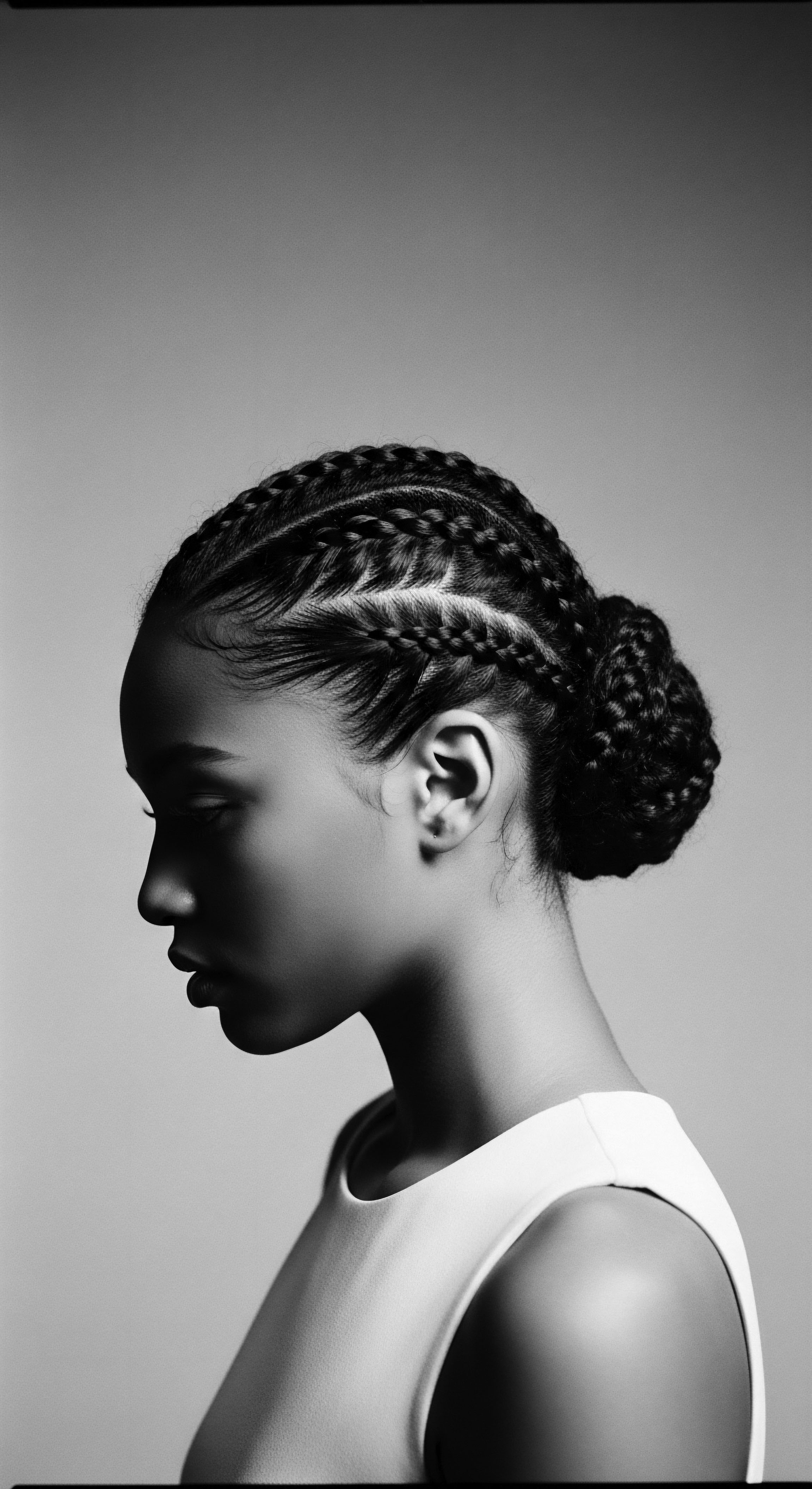
Fundamentals
The concept of Anti-Discrimination Hair emerges from a deep wellspring of human experience, signifying the inherent right to wear one’s hair in its natural state, free from the constraints of societal bias or prejudicial judgment. For countless generations, across diverse cultures, hair has served as far more than a mere aesthetic adornment. It has acted as a profound register of identity, a visible testament to lineage, status, and spiritual connection. The idea of Anti-Discrimination Hair acknowledges this sacred link, affirming that no individual should face adverse consequences in employment, education, or public life due to the texture, style, or presentation of their hair, especially when those styles are intrinsic to their racial or cultural heritage.
This core meaning extends beyond simple tolerance; it calls for a celebratory recognition of diverse hair expressions. Specifically for those of Black and mixed-race ancestry, hair holds a singular resonance, deeply interwoven with collective memory and enduring traditions. Understanding Anti-Discrimination Hair requires acknowledging the historical forces that have sought to diminish or control these natural expressions. It is a clarion call for spaces where the beauty of every strand, in its organic form, is not merely accepted but honored as a vital aspect of selfhood and heritage.
Anti-Discrimination Hair, at its heart, is about reclaiming the sanctity of natural hair as an unassailable marker of identity and heritage.
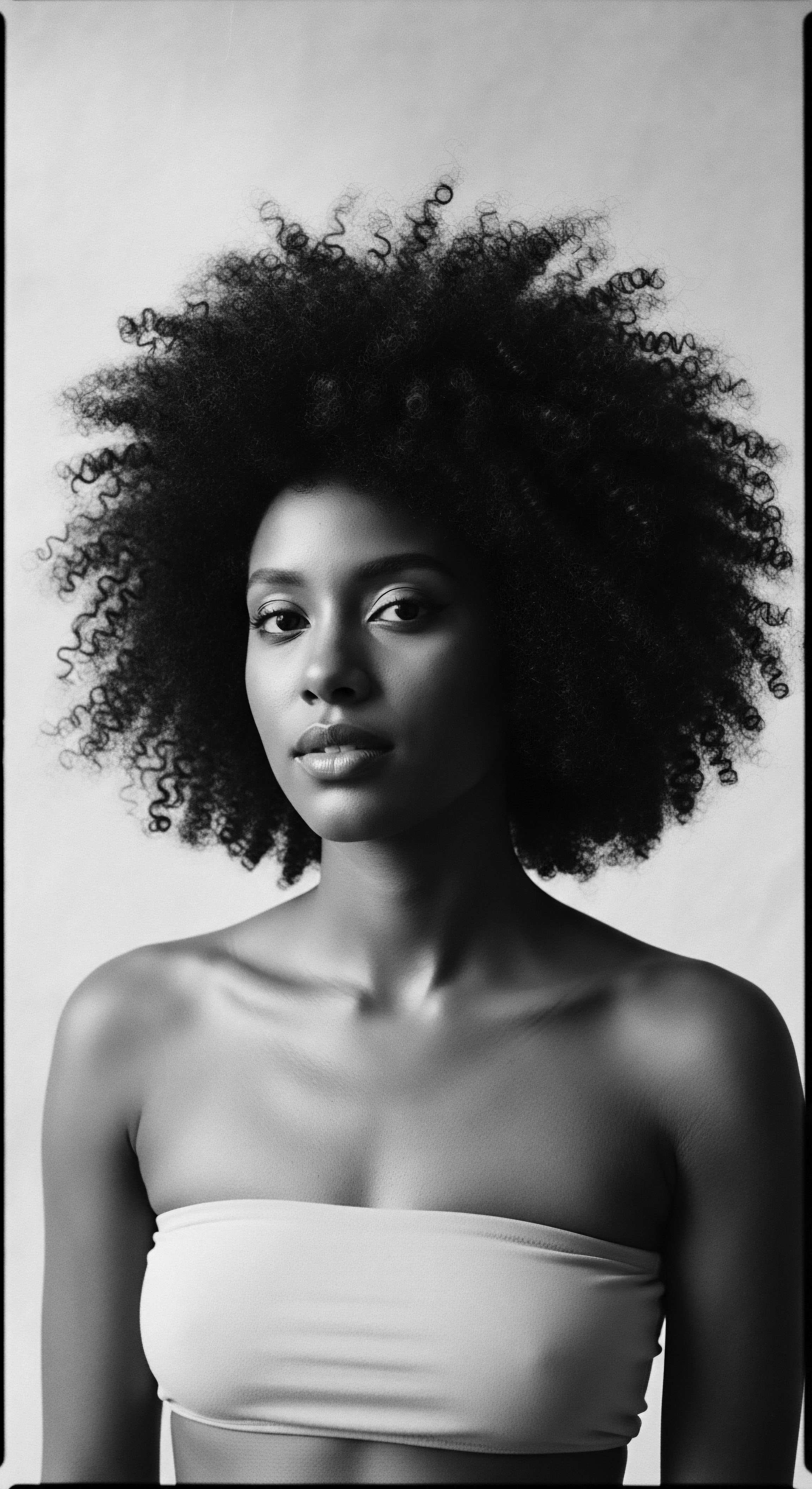
Echoes from the Source ❉ Hair as an Ancestral Ledger
Across the vast expanse of the African continent, prior to the disruptions of colonial intrusion and chattel slavery, hair was a sophisticated language. It communicated social standing, marital availability, age, ethnic affiliation, and even spiritual beliefs. The artistry involved in traditional African hairstyles was not merely cosmetic; it was a deeply communal and ritualistic practice, often a time for sharing stories and passing down wisdom from elder to youth.
Imagine the hands of grandmothers and aunties, meticulously braiding, twisting, or coiling the hair, each movement steeped in purpose and connection. This shared endeavor solidified communal bonds, transforming what might seem a simple grooming act into a profound ceremony of belonging.
In these ancient societies, specific styles carried particular meanings, reflecting the cosmology and lived experiences of the people. For instance, the Yoruba people of Nigeria held hair as sacred, viewing it as a medium connecting individuals to their ancestors and deities. Their “Irun Kiko,” a form of thread-wrapping, conveyed notions of femininity and rites of passage.
The Himba tribe in Namibia, with their distinctive dreadlocked styles coated in red ochre paste, visually articulated their deep connection to the earth and their ancestral roots. These traditions underscore a fundamental truth ❉ hair, in its unadulterated form, has always been a powerful, living archive of Black and mixed-race heritage, a tangible link to a rich past that predates the very concept of discrimination based on its texture.

The Call for Unburdened Expression
The need for Anti-Discrimination Hair arises from a historical context where textured hair has been systematically devalued and policed. This began in the Americas with the horrific realities of the transatlantic slave trade, which stripped individuals of their cultural markers, including their hair, often by force. Even after emancipation, formal and informal rules persisted, compelling Black individuals to conform to Eurocentric beauty standards. The pressure to straighten, relax, or alter natural hair became a means of assimilation, often a perceived prerequisite for social and economic advancement.
The contemporary understanding of Anti-Discrimination Hair directly confronts this legacy. It stands as a protective shield for natural hair textures and styles such as Afros, Braids, Locs, Twists, and Bantu Knots, recognizing them as authentic expressions of self and heritage. The simple meaning of this term, at its most fundamental, is the right to exist fully and authentically, with one’s crown unburdened by prejudice.
- Cornrows ❉ Traced back to 3000 B.C. Africa, these patterns traditionally identified tribal affiliation and social standing, even serving as hidden maps for enslaved individuals seeking freedom.
- Bantu Knots ❉ Their origins lie with the Bantu people of Central and Southern Africa, styles communicating beauty, sex appeal, and sanity within communities.
- Irun Kiko ❉ A Yoruba threading style from 15th century Nigeria, signifying good fortune and protecting hair from breakage while aiding length retention.
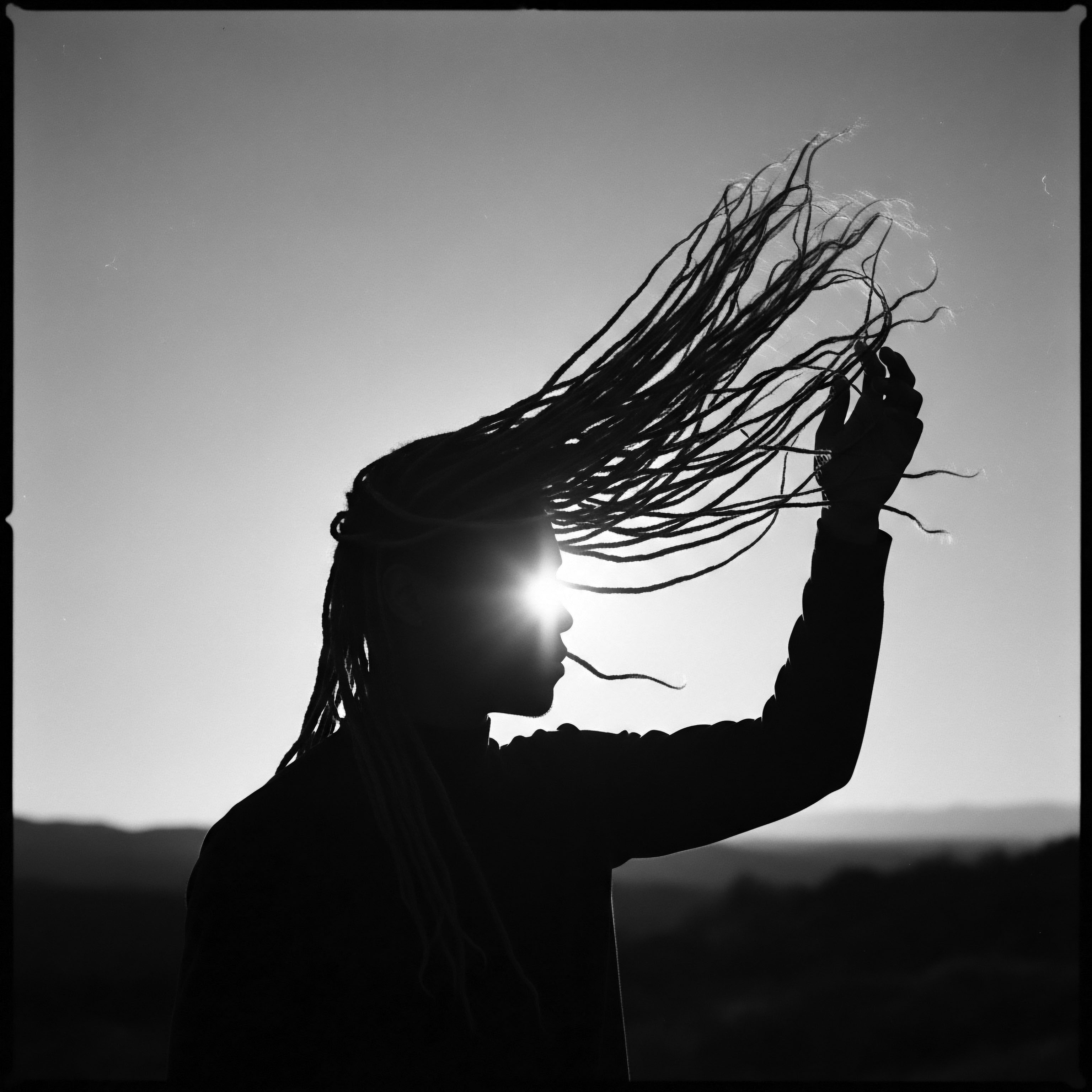
Intermediate
Expanding upon its foundational meaning, Anti-Discrimination Hair represents a crucial societal shift towards acknowledging and legally safeguarding the varied expressions of hair, particularly those rooted in African and diasporic traditions. This understanding moves beyond a simple acceptance to a recognition of hair as a profound component of racial identity and cultural expression. The very concept challenges entrenched biases that have long deemed natural Black hair as “unprofessional” or “unruly,” pushing instead for environments where every coil and curl is respected as a part of a person’s inherent dignity.
The meaning of Anti-Discrimination Hair, at this level, encompasses both the legislative efforts seeking to codify these protections and the broader societal work required to dismantle deeply ingrained prejudices. It involves a deeper historical awareness, recognizing how control over Black hair has functioned as a tool of racial subjugation, from the Tignon Laws of 18th-century Louisiana to contemporary workplace and school policies. This intermediate interpretation requires an engagement with the collective journey of Black and mixed-race communities to reclaim their hair narratives.
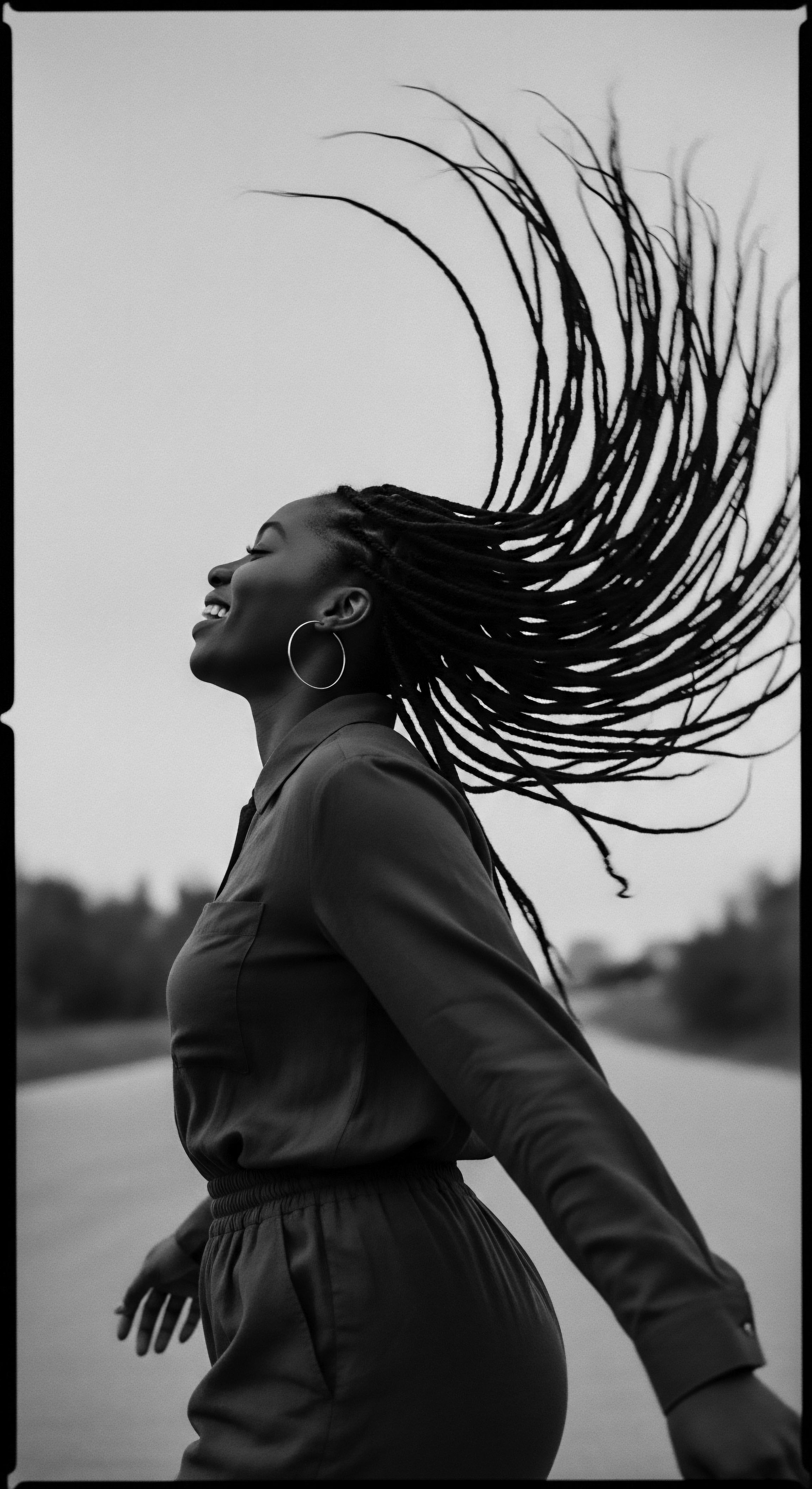
The CROWN Act’s Genesis ❉ A Modern Protective Cloak
The contemporary movement for Anti-Discrimination Hair gained significant momentum with the advent of the CROWN Act, an acronym for “Creating a Respectful and Open World for Natural Hair.” Introduced in 2019, California led the way, becoming the first state to sign such legislation into law. This legislative effort arose directly from persistent instances of individuals, particularly Black women and children, facing punitive actions or denied opportunities because of their natural hairstyles. The CROWN Act aims to explicitly prohibit discrimination based on hair texture and protective styles, including those like Braids, Locs, Twists, and Bantu Knots, in workplaces and public schools.
This act represents a pivotal step in acknowledging that hair discrimination is, in fact, a form of racial discrimination. The very existence of such legislation underscores a longstanding societal issue ❉ that the natural presentation of Black hair often stands in opposition to Eurocentric standards of “professionalism” or “neatness”. The legal framework seeks to rectify this imbalance, affirming that one’s hair, in its authentic state, should never be a barrier to education or employment. The movement for nationwide adoption of the CROWN Act continues to gather support, reflecting a growing societal awareness of this pervasive issue.
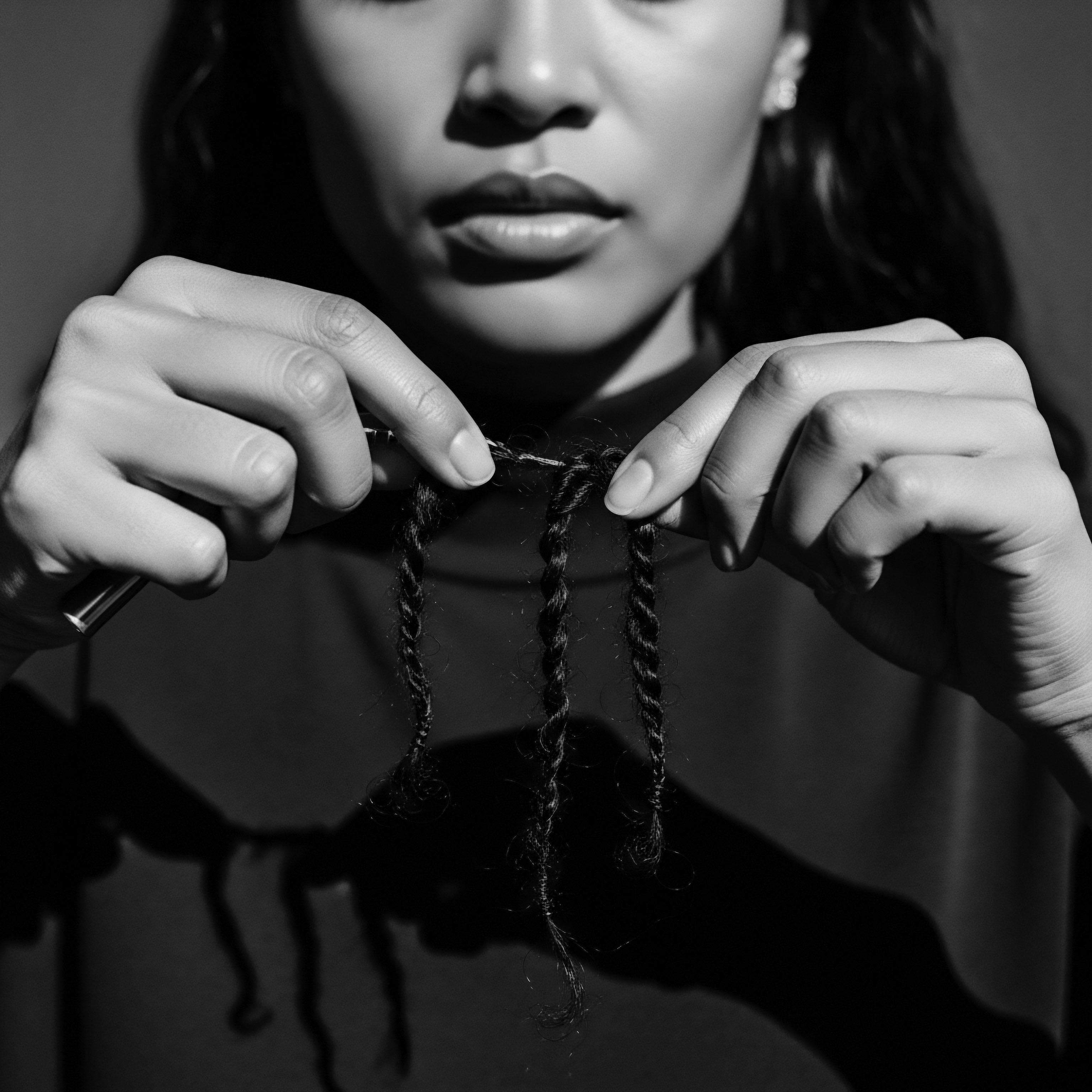
Hair as a Cultural Ledger ❉ Stories Woven in Strands
Beyond legalities, the intermediate understanding of Anti-Discrimination Hair delves into the profound symbolic significance of hair within the African diaspora. For many, hair is not merely a physical attribute; it is an emotional, symbolic, and inseparable aspect of identity. The styles, techniques, and rituals associated with Black and mixed-race hair carry centuries of history, resilience, and creative expression. They speak to stories of adaptation, survival, and the preservation of cultural memory amidst profound adversity.
Consider the act of braiding, a tradition stretching back millennia in Africa. The process itself is often a communal endeavor, a time for intergenerational bonding and the sharing of familial narratives. These styles have served as covert communication tools during enslavement, as markers of tribal lineage, and as powerful statements of resistance and self-determination during movements for Black liberation.
The distinct patterns of Cornrows, for example, could indicate one’s tribal affiliation or social standing in pre-colonial Africa. The deep historical roots of these practices lend layers of meaning to the current fight for anti-discrimination in hair.
| Historical Period/Event Pre-Colonial Africa (Ancient to 18th Century) |
| Hair Practice/Policy Intricate braiding, twisting, threading; adornments (shells, beads). |
| Cultural Significance/Impact on Heritage Served as markers of social status, age, marital status, tribal affiliation, spiritual beliefs; communal bonding rituals. |
| Historical Period/Event 18th Century Louisiana (Tignon Laws, 1786) |
| Hair Practice/Policy Laws forced free Black women to cover elaborate hairstyles with scarves. |
| Cultural Significance/Impact on Heritage Attempted to suppress visible markers of Black identity and assert social hierarchy; transformed into new forms of cultural expression through adorned headwraps. |
| Historical Period/Event Slavery Era (17th-19th Century) |
| Hair Practice/Policy Head shaving; forced straightening/wigs for house servants; cornrows as hidden maps. |
| Cultural Significance/Impact on Heritage Dehumanization; erasure of cultural identity; secret communication and survival strategies. |
| Historical Period/Event Mid-20th Century (Black Power Movement, 1960s-70s) |
| Hair Practice/Policy Emergence of the Afro; embracing natural textures. |
| Cultural Significance/Impact on Heritage Symbol of Black pride, resistance, and counter-narrative to Eurocentric beauty standards; "Black is Beautiful" campaign. |
| Historical Period/Event Contemporary Era (CROWN Act Movement, 2019-Present) |
| Hair Practice/Policy Legislation prohibiting discrimination against natural hair textures and protective styles. |
| Cultural Significance/Impact on Heritage Legal recognition of hair as a racial trait; a continued fight for equity and dignity in schools and workplaces; affirmation of cultural heritage. |
| Historical Period/Event This table traces the profound journey of Black hair through history, highlighting its enduring significance as both a site of cultural resistance and a canvas for identity. |
Hair discrimination, at its intermediate level of understanding, is recognized as a racial issue, stemming from historical attempts to police Black bodies and cultural expressions.
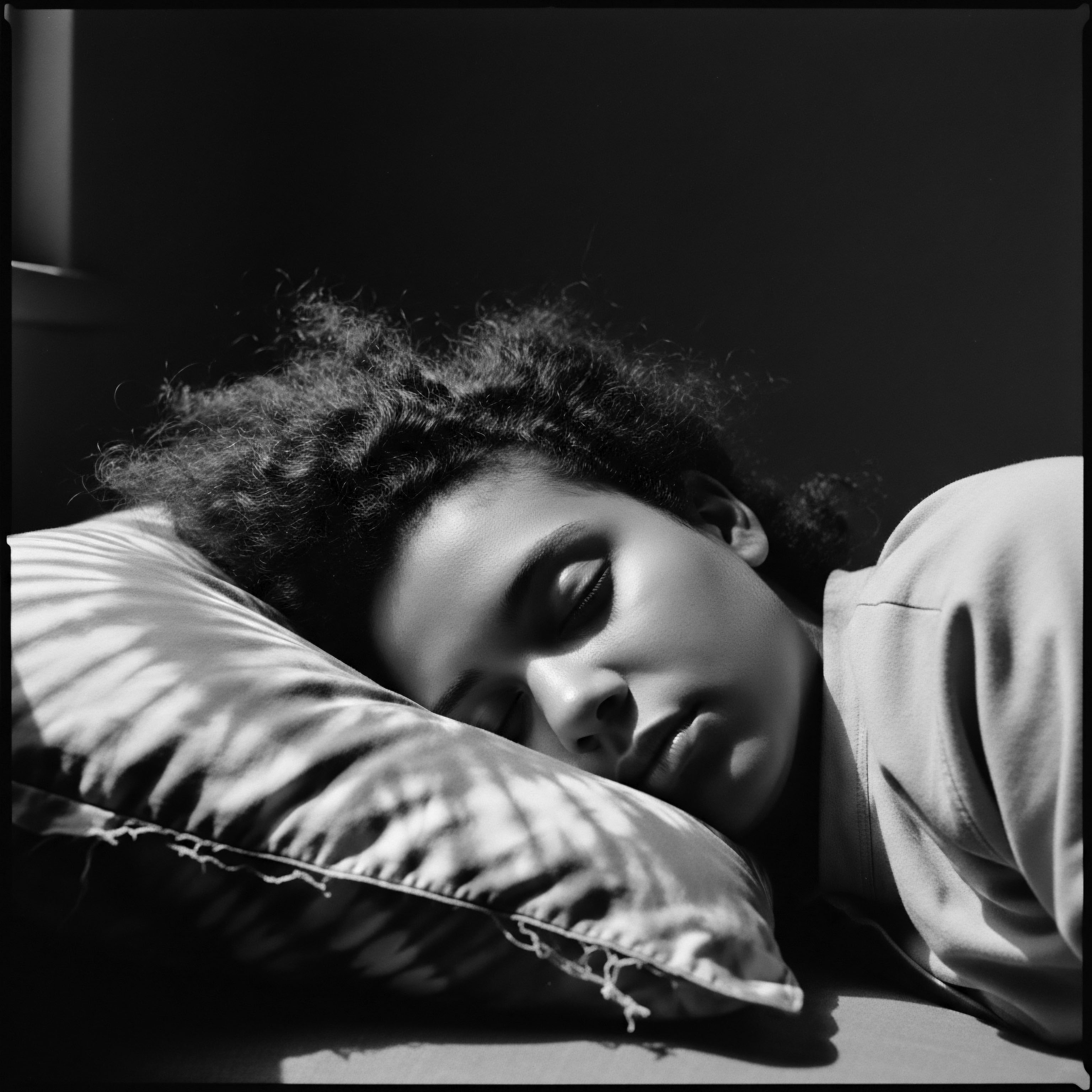
The Weight of Conformity ❉ Confronting Systemic Bias
The intermediate grasp of Anti-Discrimination Hair also requires understanding the psychological and economic toll of hair discrimination. For generations, Black individuals have faced pressures to alter their natural hair to conform to narrowly defined, often Eurocentric, standards of “professionalism” or “beauty”. This pressure extends to job interviews, workplace environments, and academic settings, where natural textures may be seen as a disadvantage.
A 2023 research study, co-commissioned by Dove and LinkedIn, vividly illustrates this ongoing challenge. The study reveals that Black Women’s Hair is 2.5 Times as Likely as White Women’s Hair to Be Perceived as “unprofessional”. This striking statistic underscores the systemic nature of bias and how deeply ingrained these discriminatory perceptions remain. Furthermore, the study found that approximately two-thirds (66%) of Black women change their hair for a job interview, with 41% of those changing from curly to straight styles.
This deeply personal experience of altering one’s appearance to meet external, biased expectations speaks to the enduring struggle for authentic self-presentation. The implication here is not merely aesthetic; it impacts career trajectories, economic mobility, and psychological wellbeing. The advocacy for Anti-Discrimination Hair aims to dismantle these barriers, allowing individuals to present their authentic selves without fear of reprisal, honoring the historical and cultural truths embedded in their hair.
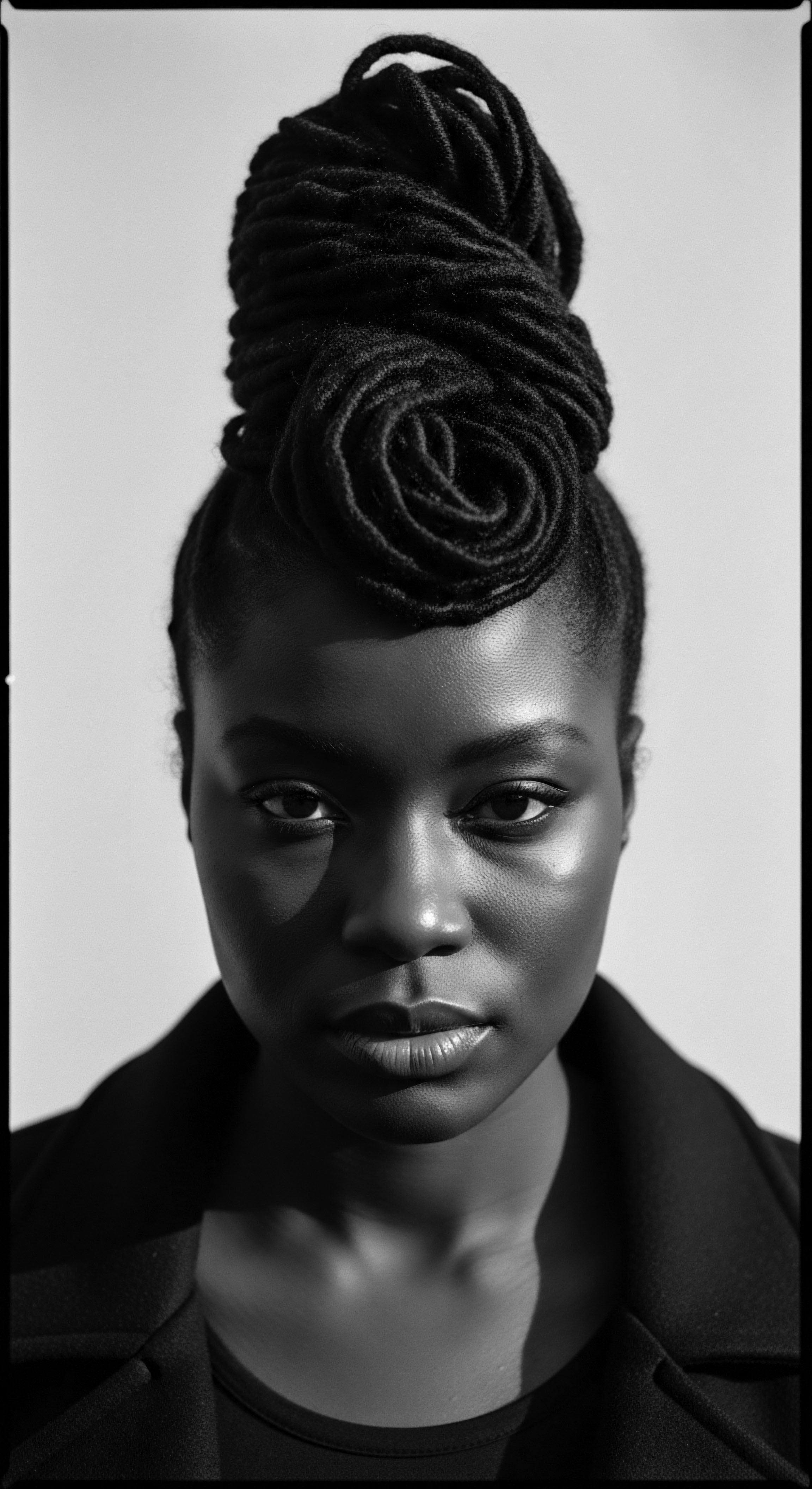
Academic
The academic elucidation of Anti-Discrimination Hair posits it as a complex legal and sociological construct, one intricately tethered to the history of racialized identity formation, particularly within the Black diaspora. This concept signifies the legal and ethical imperative to protect individuals from adverse treatment based on phenotypic markers of race, specifically hair texture and associated protective styles. It stands as a formal recognition of the deep-seated prejudice against textured hair, a prejudice historically deployed to enforce Eurocentric aesthetic norms and maintain social hierarchies. The academic lens requires a forensic examination of how cultural semiotics surrounding hair have been weaponized, leading to systemic disadvantages in educational, professional, and social spheres, and how legislative interventions now seek to remediate this historical imbalance.
At its deepest level, the meaning of Anti-Discrimination Hair reflects a re-evaluation of established beauty paradigms, acknowledging that what is deemed “professional” or “acceptable” often arises from a colonial legacy that denigrated indigenous and African aesthetic expressions. This scholarly inquiry necessarily spans disciplines, drawing from anthropology, sociology, critical race theory, legal studies, and even the biological sciences of hair to construct a comprehensive understanding of this societal concern. It is a discourse that extends to global implications, recognizing the shared struggle for hair autonomy among diverse communities of color worldwide.

The Sociological Underpinnings of Hair as Identity
Hair, for people of African descent, transcends its biological function, serving as a profound register of identity, community, and resistance. Scholars assert that its meaning is both wide and deep, possessing spiritual, religious, and socio-cultural connotations that also function as a method of self-expression. This symbolic potency renders hair a uniquely vulnerable site for racial discrimination, where biases against natural hair textures and protective styles translate into tangible social and economic penalties. The persistent policing of Black hair finds its genesis in a historical continuum of racialized control, dating back to the transatlantic slave trade, where the forced alteration or concealment of hair was a tool for dehumanization and cultural erasure.
Contemporary studies consistently demonstrate the enduring nature of these biases. The 2023 CROWN Workplace Research Study, a collaborative effort by Dove and LinkedIn, offers compelling empirical evidence, revealing that Black women’s hair experiences a heightened scrutiny in professional settings. This seminal study indicates that Black Women’s Hair is 2.5 Times More Likely to Be Perceived as “unprofessional” Compared to White Women’s Hair. This quantifiable disparity not only highlights a pervasive unconscious bias but also points to the broader societal imposition of Eurocentric aesthetic ideals onto a diverse workforce.
Such perceptions are not benign; they manifest in concrete outcomes, with nearly half (44%) of Black women under 34 feeling pressured to have a headshot with straight hair, and a quarter believing they have been denied a job interview due to their hair. The deeper analysis of this statistic reveals a cultural violence of identity erasure, as Black women often internalize these external pressures, leading to psychological conflict and the adoption of practices, such as chemical straightening, that can cause physical harm and detach them from their ancestral hair heritage (Oyedemi, 2016, as cited in).
The phenomenon of anti-discrimination hair addresses the insidious impact of ingrained biases that force individuals to choose between professional acceptance and authentic cultural expression, particularly for Black women whose hair is uniquely tied to their heritage.

Biological Intricacies of Textured Hair and Traditional Care
The biological structure of textured hair itself, characterized by its elliptical follicle shape and a propensity for tighter curl patterns, contributes to its unique needs and inherent vulnerabilities, yet also its remarkable resilience. Unlike straighter hair types, coiled hair experiences more points of contact along the strand, making it more prone to tangling and breakage if not handled with care. This intrinsic biological reality underscores the wisdom embedded in ancestral hair care practices, many of which prioritized protection, moisture retention, and gentle manipulation.
Across West Africa, for instance, traditional practices revolved around natural emollients and protective styles designed to mitigate breakage and maintain hair health amidst diverse environmental conditions.
- Shea Butter ❉ Utilized for centuries, particularly in West Africa, as a deeply nourishing moisturizer for both skin and hair. Its richness in fatty acids and vitamins provides a protective barrier against environmental stressors and helps to keep hair soft and manageable.
- African Hair Threading (Irun Kiko) ❉ Practiced by the Yoruba people since the 15th century, this protective style involves wrapping hair sections with flexible threads. Beyond its social and spiritual significance, threading stretches the hair and aids length retention by protecting strands from breakage, effectively sealing the cuticle.
- Chébé Powder ❉ Sourced from Northern Chad, this powder from the Chébé plant seeds, when mixed with water and applied with moisturizers like shea butter, was believed to enhance length retention by filling hair shaft spaces and sealing the cuticle, a testament to ancient understanding of hair fiber integrity.
These ancestral practices, passed down through generations, demonstrate an intimate knowledge of textured hair biology long before modern trichology emerged. The emphasis on moisture, protection, and minimal manipulation, inherent in these traditions, resonates with contemporary scientific recommendations for maintaining healthy textured hair. The meaning of Anti-Discrimination Hair, from a scientific perspective, is a validation of these deep-rooted practices, asserting their efficacy and recognizing the inherent health and beauty of textured hair when cared for according to its unique biological requirements.
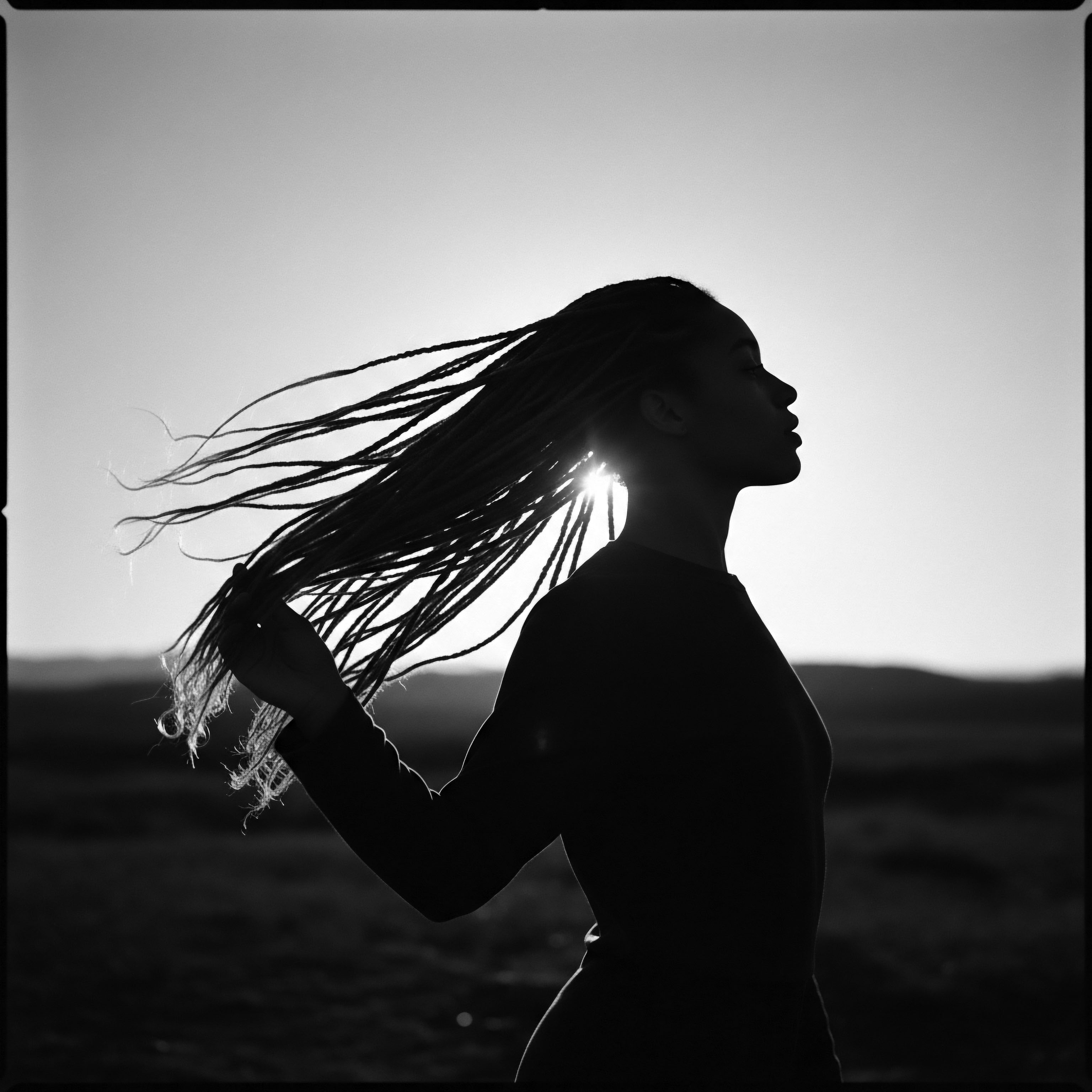
Ancestral Practices as Epistemic Foundations
The academic lens on Anti-Discrimination Hair compels us to view ancestral hair care traditions not merely as quaint historical footnotes, but as robust epistemic foundations – systems of knowledge and practice developed over millennia. These traditions, such as the intricate Braiding Techniques of the Himba and Fulani people or the strategic use of Natural Emollients like shea butter, represent sophisticated understandings of hair’s biological properties and its interaction with the environment. The careful interlacing of strands in cornrows or the protective nature of Bantu knots speaks to an intuitive, generational wisdom regarding hair management and preservation, predating contemporary scientific nomenclature.
The preservation and continuity of these practices, even amidst historical attempts at cultural suppression, testify to their profound significance. During periods of enslavement, for instance, specific braiding patterns sometimes served as covert maps for escape routes, embodying resilience and ingenuity. The ritualistic nature of communal hair styling sessions, still practiced in many Black families, transmits cultural narratives and strengthens intergenerational bonds, affirming hair as a living heritage.
The movement for Anti-Discrimination Hair, then, is a contemporary assertion of these ancestral knowledge systems, demanding that their inherent value and functionality be recognized and respected in all societal contexts. It is a call to view diverse hair textures and styles not as deviations from a norm, but as rich expressions of human diversity, deeply rooted in specific historical and cultural trajectories.
The comprehensive interpretation of Anti-Discrimination Hair acknowledges ancestral hair practices as valid, historically informed systems of knowledge, rather than mere aesthetic choices.
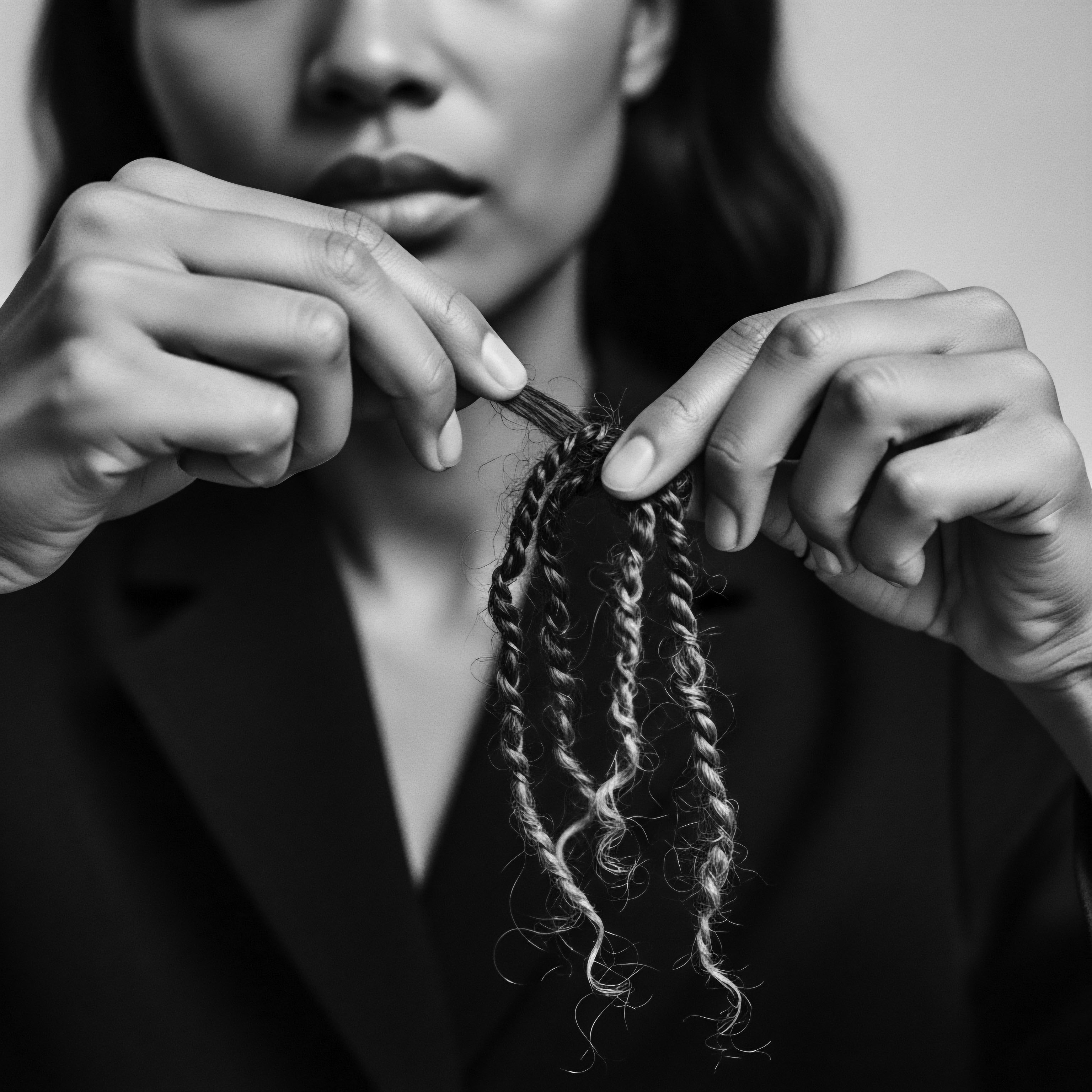
The Ongoing Legal and Social Evolution
The legal landscape surrounding Anti-Discrimination Hair is a dynamic arena, reflecting both progress and persistent challenges. While the Civil Rights Act of 1964 prohibited race-based discrimination, its initial interpretation by courts often failed to extend protections to hair texture or styles, creating a loophole for discriminatory practices. The “mutable characteristic” argument, where hair was deemed a choice rather than an immutable racial trait, historically undermined cases brought by individuals facing hair discrimination. This judicial stance underscored a profound misunderstanding of hair’s racial and cultural significance, particularly for Black Americans.
The emergence of the CROWN Act, first in California in 2019 and subsequently adopted by 25 U.S. states as of July 2024, signifies a crucial legislative counter-narrative. These laws explicitly protect individuals from discrimination based on natural hair textures and protective styles, including but not limited to Afros, Braids, Locs, Twists, and Bantu Knots. However, the journey is far from complete.
Despite a federal CROWN Act passing the House of Representatives in 2022, it has yet to secure passage in the Senate, leaving many vulnerable to persistent biases. The ongoing case of Darryl George, a Texas high school student suspended for the length of his locs, illustrates the complex interpretations and sometimes narrow applications of existing CROWN Act legislation, highlighting the continued need for robust, universal protections. The academic examination of Anti-Discrimination Hair reveals that its full realization requires not only legislative enforcement but also a profound societal shift in perception, dismantling the ingrained, often subconscious, biases that devalue textured hair.
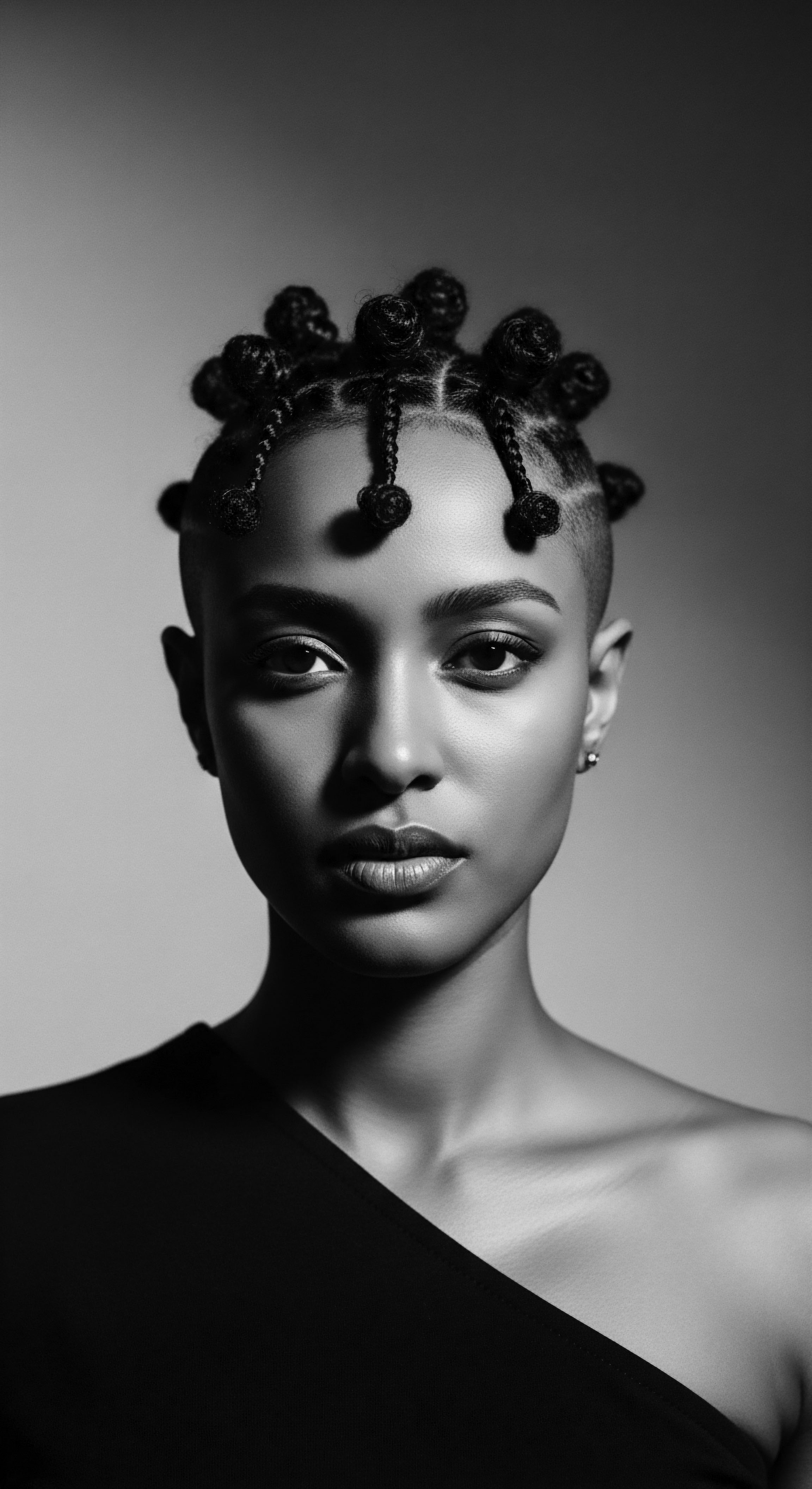
Reflection on the Heritage of Anti-Discrimination Hair
To consider the Anti-Discrimination Hair is to engage in a profound meditation on the enduring spirit of textured strands, a lineage flowing from ancestral hearths through challenging tides, finally arriving at a powerful present. It is a journey of rediscovery and reaffirmation, a deep breath taken in the midst of a world too often quick to judge what it does not understand. Every coil, every twist, every loc carries a memory, a story, a wisdom whispered across centuries. These natural expressions are not merely biological marvels; they are sacred extensions of self, living archives of collective experience, resilience, and unyielding beauty.
The fight for Anti-Discrimination Hair is not simply a legal battle for rights, though that is undeniably vital. It is a spiritual and cultural reclamation, a profound commitment to honoring the ancestral practices that safeguarded and celebrated these magnificent crowns. It is about understanding that the intricate braiding patterns of ancient West Africa, the protective practices passed down through generations, and the sheer artistry of diasporic hair traditions are not merely stylistic choices. They embody a profound knowledge of self, community, and connection to the earth.
They are the Tender Thread, binding us to those who came before, shaping us into the Unbound Helix we are destined to become. This continuous journey, from the elemental biology of our hair to its role in voicing identity and shaping futures, stands as a testament to the undeniable power and heritage of every single strand.
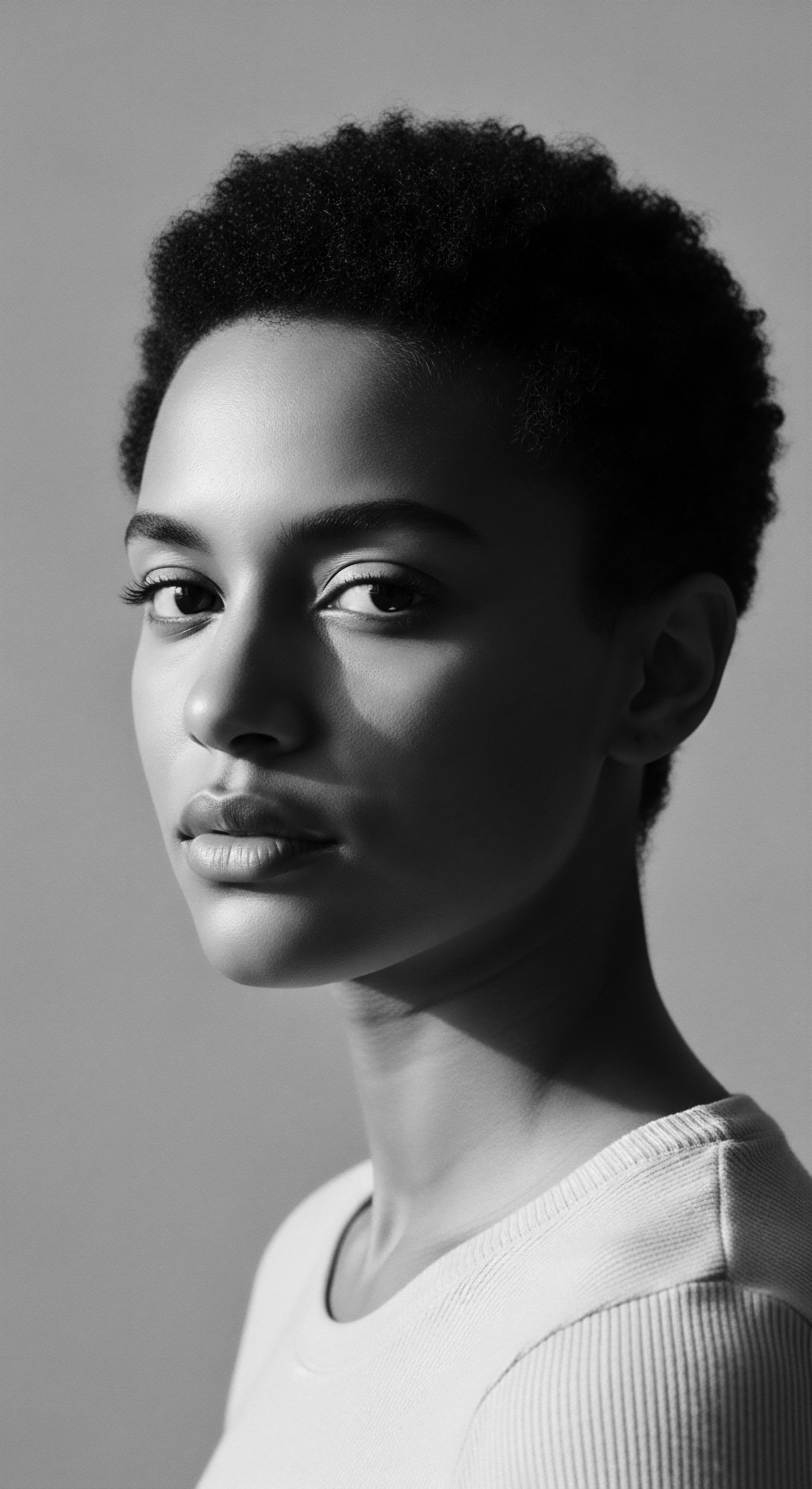
References
- Byrd, A. and Tharps, L. (2014). Hair Story ❉ Untangling the Roots of Black Hair in America. St. Martin’s Griffin.
- Chapman, B. (2014). Untangling the Roots of Black Hair. University of Illinois Press.
- Collins, P. H. (1990). Black Feminist Thought ❉ Knowledge, Consciousness, and the Politics of Empowerment. Routledge.
- Dawson, G. A. Karl, K. A. & Peluchette, J. V. (2019). Hair matters ❉ Toward understanding natural black hair bias in the workplace. Journal of Leadership & Organizational Studies, 26(3), 389-401.
- Ebanks, C. J. & Okunrounmu, O. (2020). Hair and the City ❉ A Look at the Legal Landscape of Natural Hair Discrimination in Employment. Journal of Business & Technology Law, 15(2), 285-307.
- Griffin, C. (2019). How natural black hair at work became a civil rights issue. JStor Daily.
- Hamilton, A. (2020). Untangling discrimination ❉ The CROWN Act and protecting Black hair. U. Cin. L. Rev. 89, 483.
- Johnson, T. & Bankhead, T. (2014). Hair It Is ❉ Examining the Experiences of Black Women with Natural Hair. Journal of Black Studies, 45(1), 3-23.
- Koval, S. V. & Rosette, A. S. (2021). The Professionalism Penalty ❉ Bias Against Black Women with Natural Hair in Job Interviews. Social Psychological and Personality Science, 12(6), 1147-1156.
- Opie, T. & Phillips, K. R. (2015). Hair politics ❉ African American women and the struggle for natural hair. Women’s Studies International Forum, 51, 1-9.
- Owens Patton, T. (2006). A Black Feminist Perspective on the Problematic of Hair. The Western Journal of Black Studies, 30(2), 113-125.
- Rosado, S. (2003). Hair and the African Diaspora. Journal of Black Studies, 34(1), 58-74.
- Thompson, K. (2009). Hair story ❉ A cultural history of black hair. St. Martin’s Press.
